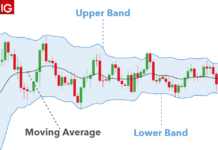
In the intricate world of financial markets, bond trading is a cornerstone of investment strategies. Advanced bond trading strategies are essential for UK traders seeking to navigate this complex landscape and maintain a competitive edge. These strategies go beyond traditional approaches, allowing traders to leverage market nuances and capitalise on opportunities that might go unnoticed.
This article delves into the realm of advanced bond trading strategies, shedding light on how UK traders stay ahead in the ever-evolving market.
Yield curve strategies: Navigating interest rate dynamics
The yield curve, a visual depiction of bond yields across various maturities, offers valuable insights for experienced traders in the UK. A standard yield curve exhibits an upward slope, indicating that long-term bonds yield higher returns than short-term bonds. However, the yield curve can undergo shifts in response to fluctuations in interest rates and market expectations.
Traders adept in yield curve strategies monitor changes in the curve’s shape, as it can signal shifts in market sentiment and future interest rate movements. A flattening curve, where the difference between short and long-term yields narrows, might suggest anticipation of an economic slowdown.
Credit spread strategies: capitalising on risk and reward
Credit spread strategies offer UK traders a way to capitalise on perceived credit risk differences between bonds. A credit spread represents the difference in yields between a higher-quality bond and a riskier one with a similar maturity. Advanced traders recognize that credit spreads can fluctuate due to changes in market sentiment, credit ratings, or macroeconomic factors.
One common credit spread strategy is the “long-short credit spread.” Traders buy a bond with a higher yield and sell a lower one. This strategy capitalises on the expectation that the spread will narrow, resulting in potential gains. However, it’s crucial for traders to thoroughly assess credit quality and research issuer fundamentals to avoid unforeseen risks.
Duration strategies: Navigating interest rate risk
Fluctuations in interest rates can have a substantial impact on bond prices. Skilled traders in the UK utilise duration strategies to effectively manage interest rate risk. Duration is a metric that quantifies a bond’s sensitivity to changes in interest rates. Bonds with longer durations are more responsive to rate fluctuations, whereas bonds with shorter durations are less affected.
Traders adept in duration strategies use this insight to position their portfolios according to their interest rate forecasts. If they anticipate rising interest rates, they might reduce exposure to longer-duration bonds, which are more vulnerable to price declines. If they expect rates to decline, they might allocate more to longer-duration bonds to benefit from potential price appreciation. By incorporating duration strategies into their approach, UK traders can effectively manage interest rate risk and enhance their portfolio performance.
Convertible arbitrage: Navigating the equity-bond relationship
For UK traders seeking unconventional strategies, convertible arbitrage offers a unique opportunity. Convertible bonds are hybrid securities that can be converted into a predetermined number of company shares. This relationship between equity and debt creates arbitrage opportunities, significantly when the convertible bond is undervalued compared to the underlying stock.
Advanced traders employing convertible arbitrage simultaneously buy the convertible bond and short an equivalent amount of the underlying stock. This strategy aims to profit from price discrepancies between the two instruments. If the stock rises, the convertible bond’s value also tends to increase. If the stock falls, the short position on the stock can offset losses from the convertible bond. UK traders skilled in this strategy navigate the intricate relationship between equity and debt, exploiting market inefficiencies for potential gains.
Macroeconomic Analysis: Forecasting a
In advanced bond trading strategies, macroeconomic analysis is a pivotal tool for UK traders aiming to stay ahead. Macroeconomic factors, such as GDP growth, inflation rates, and central bank policies, can profoundly impact bond markets. Advanced traders recognize that a comprehensive understanding of these factors can provide invaluable insights for informed decision-making.
One strategy that emerges from the macroeconomic analysis is duration matching. Traders match the duration of their bond portfolio to their outlook on interest rates. They might shorten the portfolio’s duration to mitigate potential losses if they anticipate rising rates. Conversely, if they expect rates to fall, they might extend the duration to capitalise on potential price appreciation. This approach demands a keen understanding of economic indicators and the ability to translate macroeconomic trends into actionable trading strategies.
To that end
In the ever-evolving landscape of financial markets, advanced bond trading strategies empower UK traders to navigate complexities and capture opportunities that traditional approaches might overlook. Yield curve strategies provide insights into interest rate dynamics, credit spread strategies capitalise on risk and reward differentials, duration strategies help manage interest rate risk, and convertible arbitrage explores the equity-bond relationship.
By mastering these advanced strategies, UK traders elevate their trading game in the bond market, staying ahead of shifts and making the most of their many opportunities. The art of advanced bond trading lies in deciphering intricate market signals, leveraging market nuances, and strategically positioning portfolios for success.












